Inter
Overview
A big part of being human is facing adversity, but finding ways to cope and communicate it can be really difficult. As a young person, my problems didn’t feel significant enough to bring to a therapist or counselor, and I just wanted to find ways to strike up conversation with my friends that would help me feel heard and supported.
Over a 6 week sprint, I researched, designed and delivered a wellbeing app called Inter. Early user testing scored highly, with all participants feeling like the app would help alleviate some of the problems that come with trying to talk about their mental health.
Inter focuses on stimulating conversations between close friends through affirmations, daily journaling and education. Users are encouraged to talk about their daily highs and lows and are given a platform to see the people that care for them, and are willing to talk.
Role
Sole UX/UI Designer
Background
Academy Xi
Personal Project
Duration
6 Weeks in 2022
Identifying the Problem
I want to show my support for my friends, but finding ways to get them to open up is difficult. Based on this, I developed a primary problem statement to frame my inital research.

I developed a research plan to gather data around the use cases for communication surrounding mental health, including use of mental health services and ways of talking.

Understanding the Current Climate
I began by looking through some of the most frequently used mental health support websites such as BetterHelp and Beyond Blue. Each of the services were designed with an individual who was seeking help for themselves in mind, and therefore finding information regarding how to talk to others was sometimes difficult. As a result of being portals to access professional help, the services lacked education surrounding ways of communication with peers, an important avenue in dealing with daily stressors.

The services above boast large numbers, highlighting the number of individuals who has successfully sought help, but that also got me thinking, who were the types of people who did not seek help and why. To investigate this, I conducted a literature review in which I looked into when, where and why young adults seek mental health support.
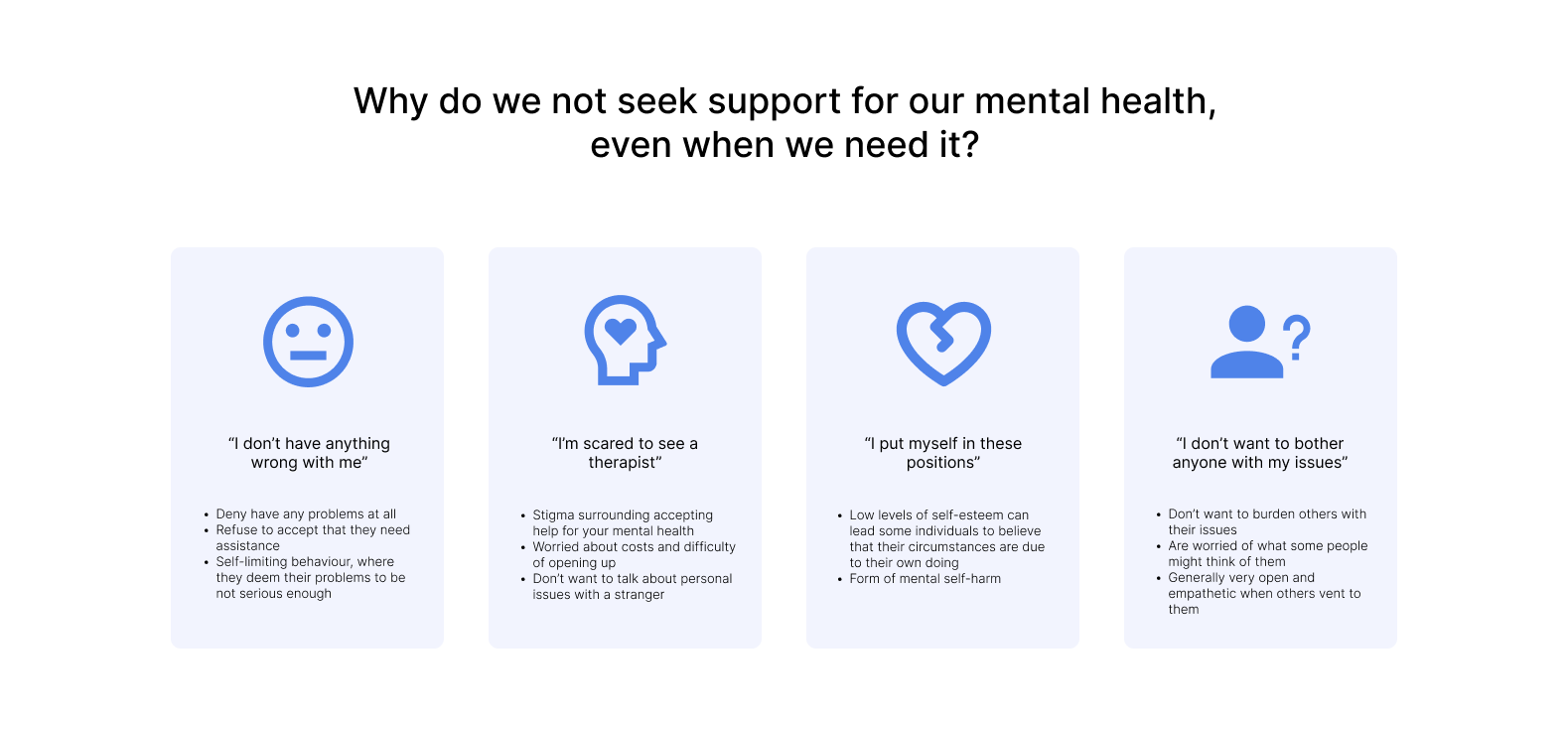
My findings highlight some of the largest mental barriers young adults face when seeking support, including perceptions of problems being self-limiting (problems are viewed as not important) and disengagement with typical mental health services.
Why do we find it difficult to talk about our Mental Health?
People, specifically young adults, seem to struggle with openly talking about daily stressors and mental struggles. Prehaps the problem is not being able to get others to open up, but to get people more comfortable talking about their wellbeing.
To investigate this, I utilised two main research methods;
- Surveys to gain a general overview of the general population in regards to their mental health support usage.
- Semi-structured interviews with the intent of having my participants relay their experiences with talking to others and talking about their own problems.
Across both surveys and interviews my participants noted that they have little issue talking to their peers about their peer's problems, but found it very aversive and uncomfortable to talk about themselves.
The pain points and difficulties for users could be surmised in 5 main points.

A large amount of my findings challenged my hypothesis that
"Young men who feel that they are unable to communicate and care for their friends who are going through difficult times want to be able to direct them to support channels but don’t know where to start".
It seems that there lies an issue in getting young adults comfortable to open up about themselves. Additionally, there is a gap in established mental health services for people wanting to find comfort in their peers, and who are not ready to receive professional help.
These findings ultimately lead to me to redefine my problem statement, focusing on individuals who want to talk about their mental health to friends, but struggle to find ways to begin.

How can we start more conversations surrounding wellbeing
Based on this refined problem statement, I developed a 'how might we statement' to use as a framework across two ideation workshops.

The general aim of these workshops were to brainstorm features that would help to alleviate some of the common problems young adults face when talking about their mental health to their peers.
Participants then helped vote for the most desirable features on a MVP matrix to ensure the most important features were priortised.
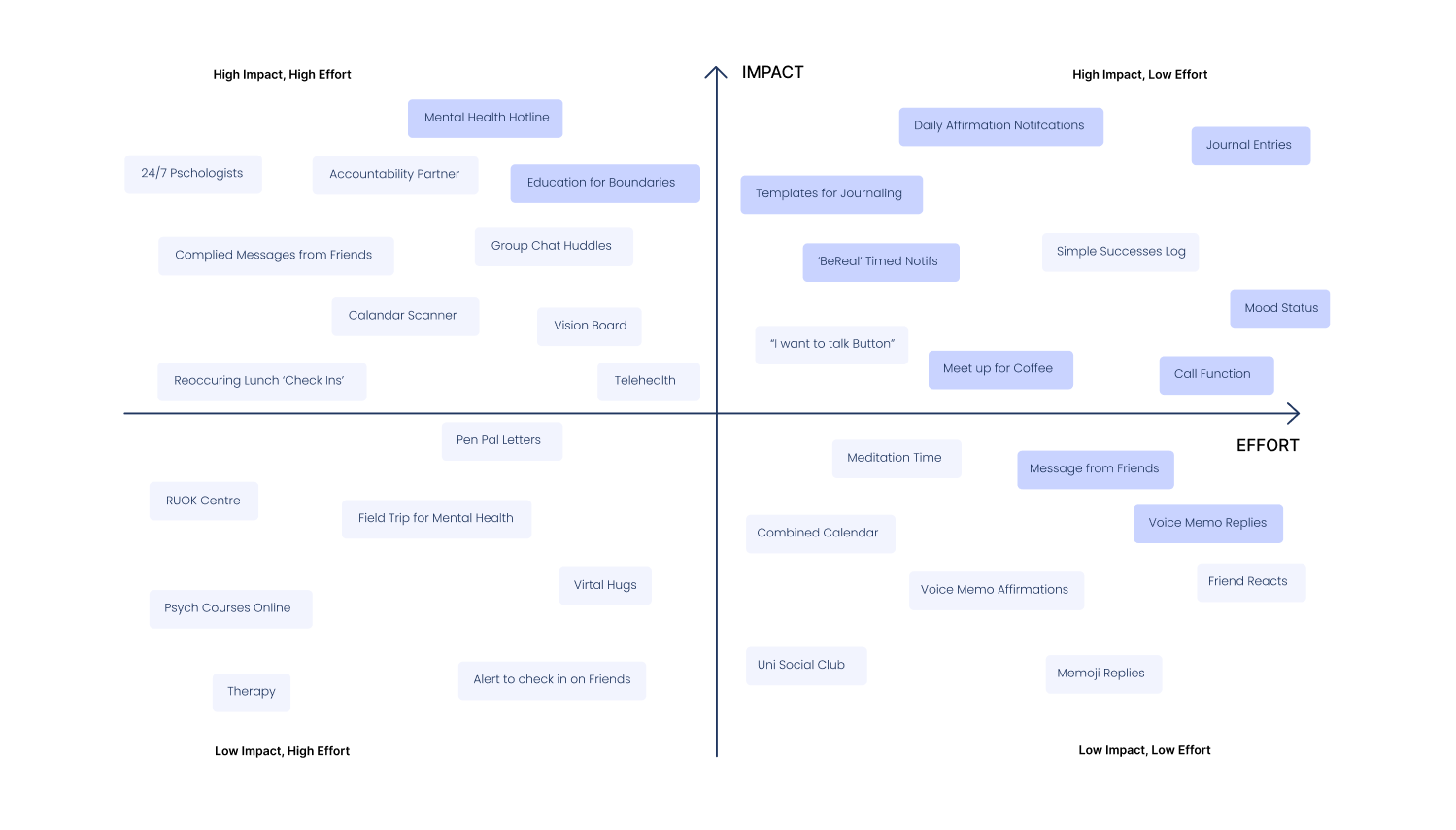
Keeping time constraints in mind, I chose some desired features from the medium-high effort but high value range coupled with some easy wins to round out my solution. Each intended feature worked to solve or alleviate one of the pain points that I defined based on the responses from my interviews.

Additionally, my workshops highlighted that necessity for some key principles to be put in place, to ensure sensitivity and morality within my product. I defined these two core design principles, so as to ensure I kept the primary message of the product in mind throughout the final strech of the project.
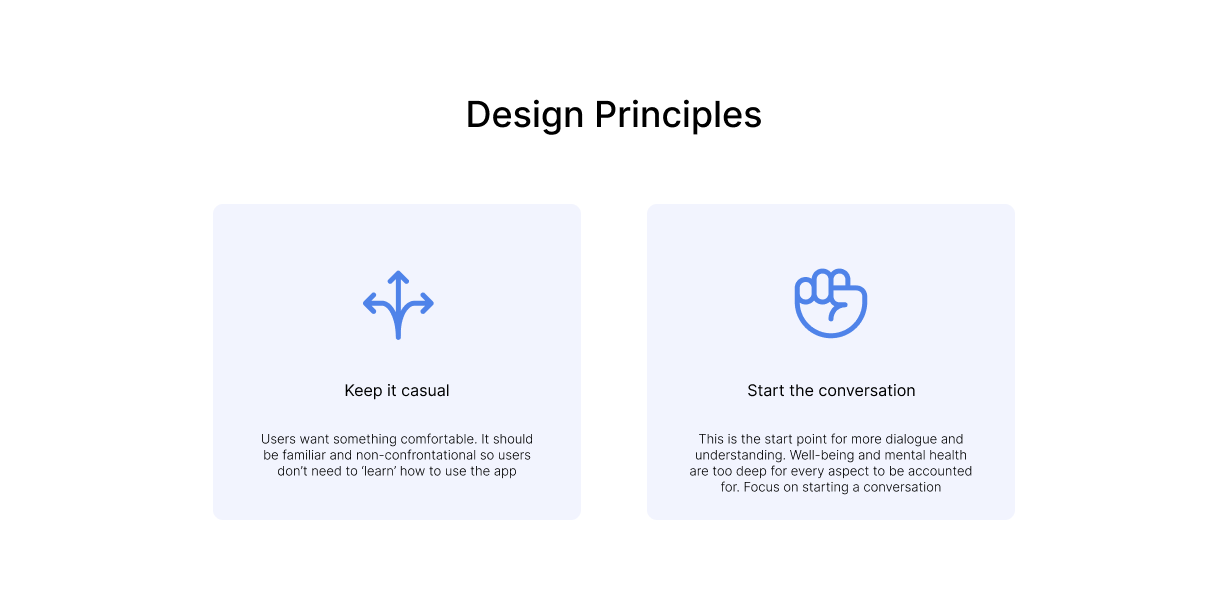
Designing a story
I had the features I wanted to be included, but I wanted to test with users the potential touch points and proposed remedies within the product.
To test this I drew up a story board to highlight how the app could be used, and tested it across potential users to understand their joys, confusions and opportunities in a potential use case. Overall, the story board was received extremely well.
.jpg)
I developed a flow as a form of information architecture to determine how features would be grouped within the app. The flow was modeled off commonly used social media apps, such as BeReal, Instagram and Twitter to ensure users felt comfortable from first usage.
.jpg)
Moving forward following small tweaks to the architecture and feature set of the app, I drew up some low-fidelity wireframes and continued to test this with users.
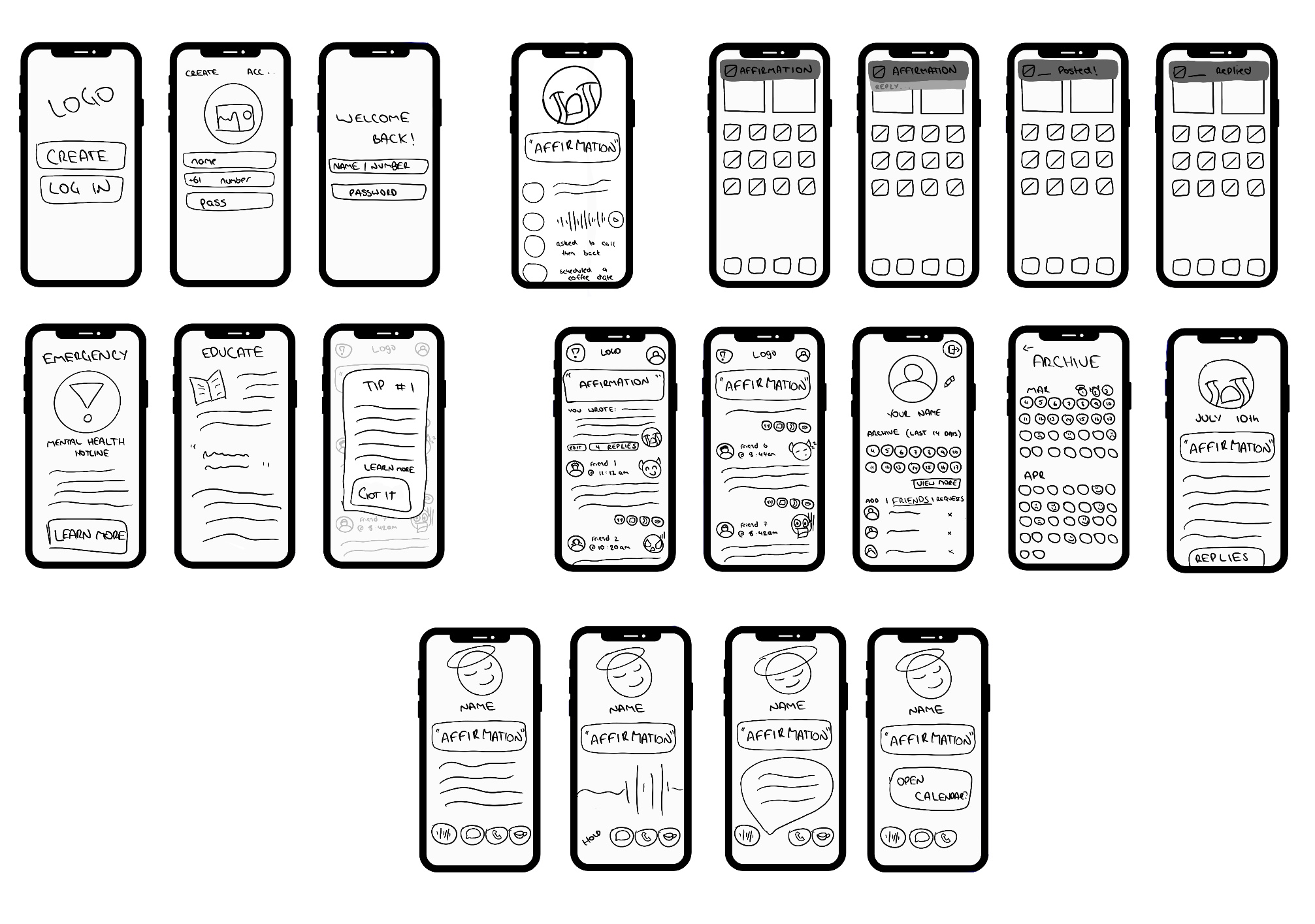
Modifying the prototype
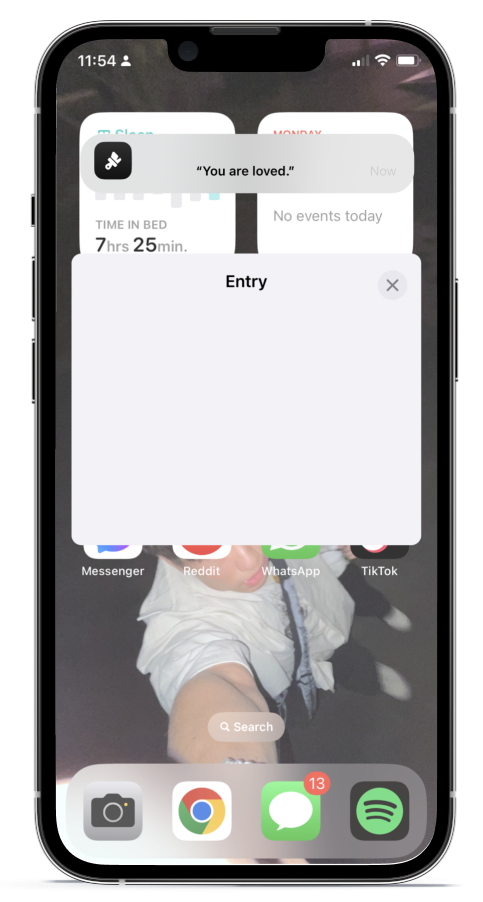
01
Notifications
Originally, affirmations were single line statements that didn't hold alot of value. After a card sort with potential users they were altered to minimal, brightly coloured pictures.

02
Feed
The feed is the main place for users to view their own and other's journal entry for the day. Users found some issues navigating and locating certain tools, so I adapted the hierarchy to feel more intuative to users.
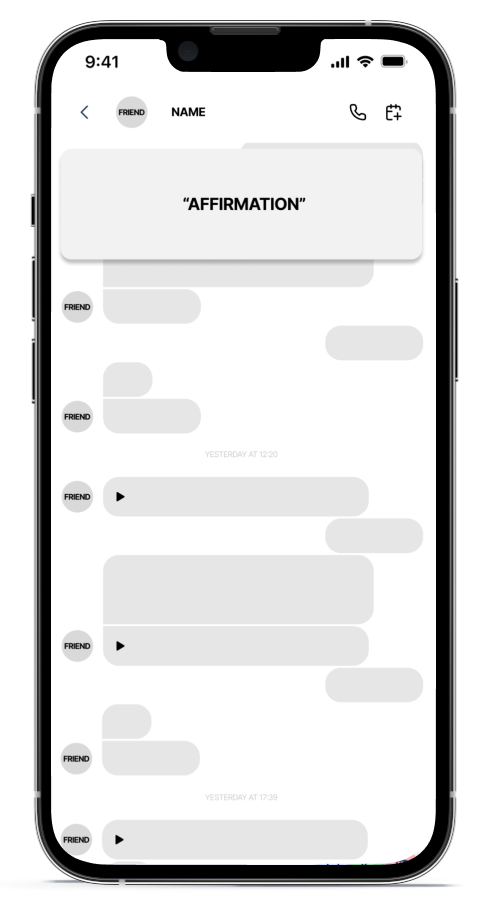
03
Messages
Initially, direct messaging was not a feature planned for Inter, however, users found that constantly redirecting and having to go back to the app tedious and clunky. As a result of this, I baked in a direct messaging feature that let users separate their other conversations from these ones.
What is Inter?

Inter is a mobile phone app, aimed to be used by young adults to vent and journal their day to day lives. It provides a space in which close friends can talk and respond to each other, and start conversations that skip past all the small talk, and delve deeper into the things that are bothering them.
Styling the app
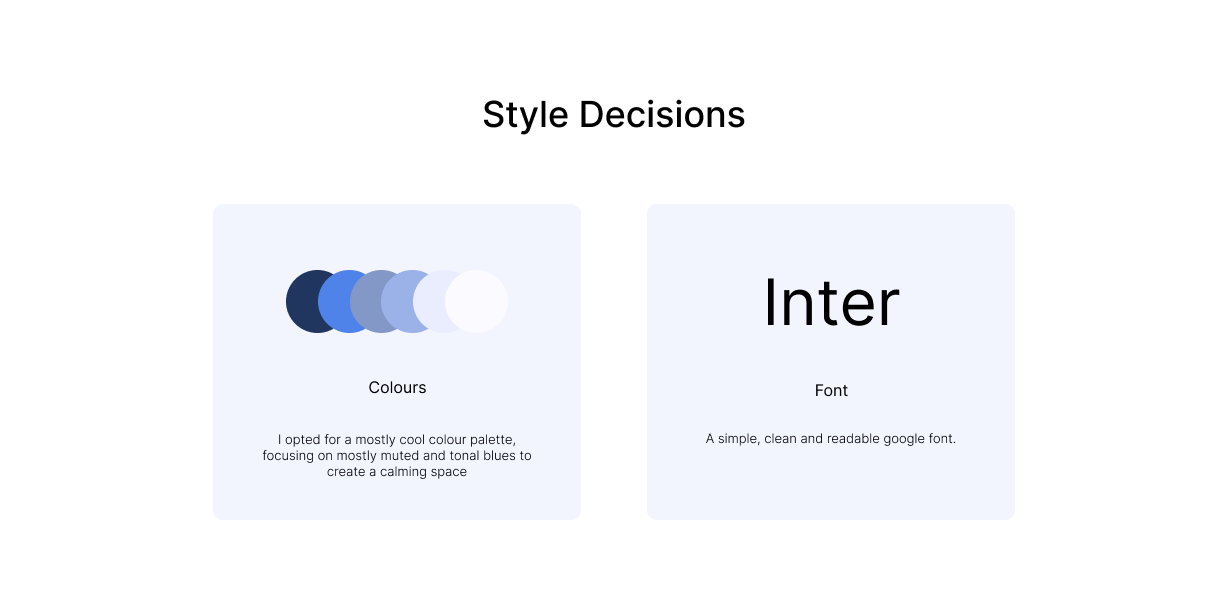
In terms of choosing colours and font, the stylisation of Inter was very straightforward. The app needed to be calming, and legible, and most importantly do what it was meant to. It didn't need a pleathora of features, but it did need to be good at getting people to communicate.
The present state of Inter
Inter is what you make out of it, there are avenues for self help through affirmation and education and also ways to support your friends when you are feeling like you are able to. At it's core, Inter was made to stimulate conversation so that the things in life that feel like they're "not a big deal" can be talked about.
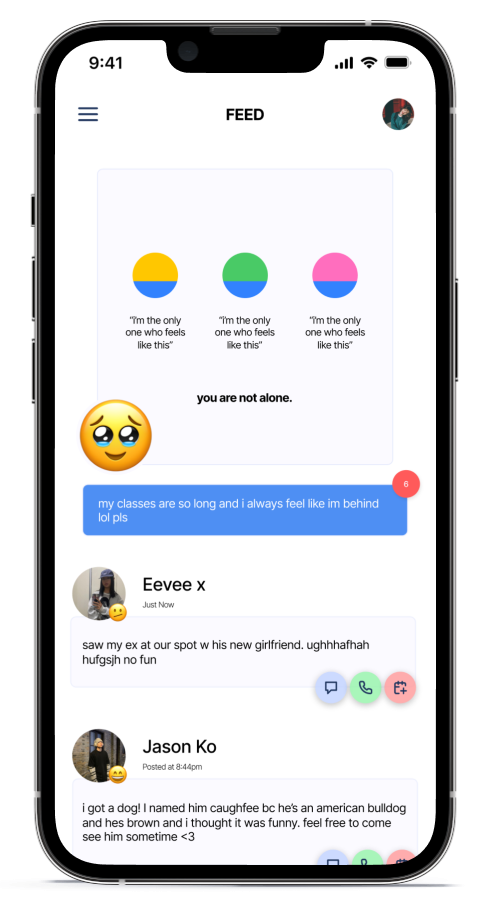
01
Affirmations
Affirmations were sourced from the Instagram page, @newhappyco and were recreated in Figma for the purposes of this project.
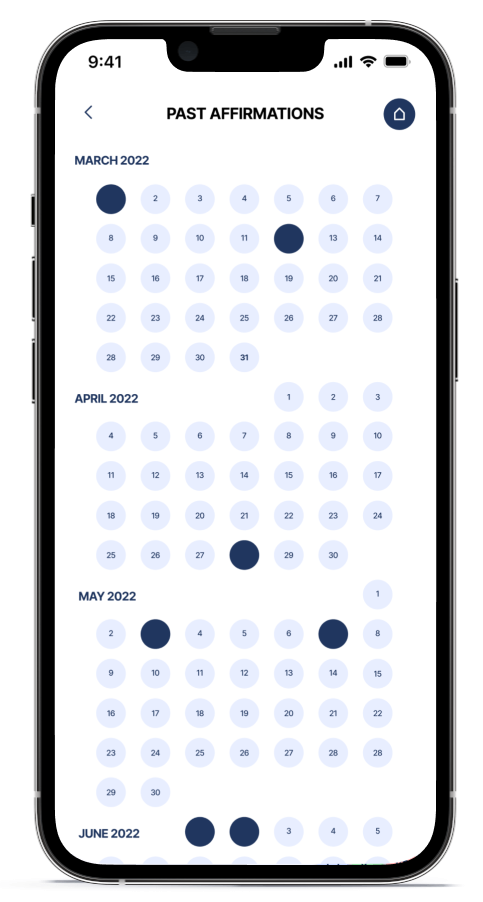
02
Archive
A screen dedicated to progress and tracking. Users are able to look back to specific days and view their progression.
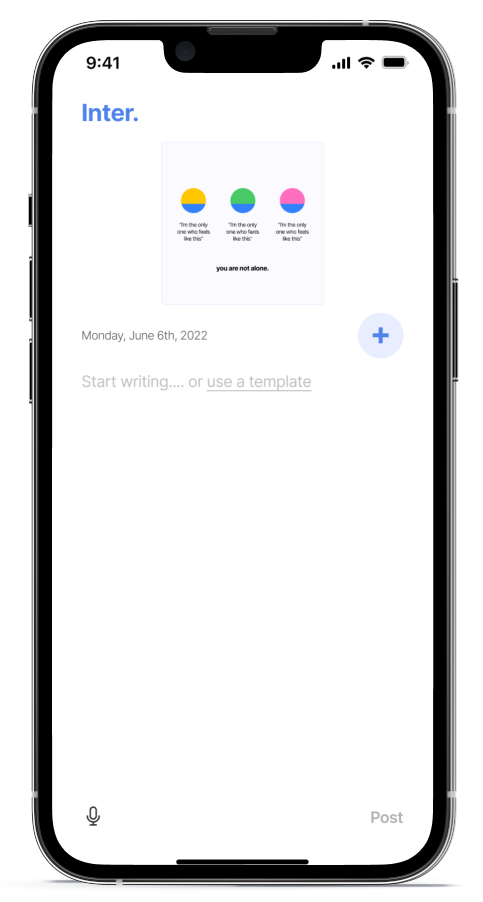
03
Journal templates
To help guide new users to express their feelings in a way that is non-confrontational and opens them to receiving help.
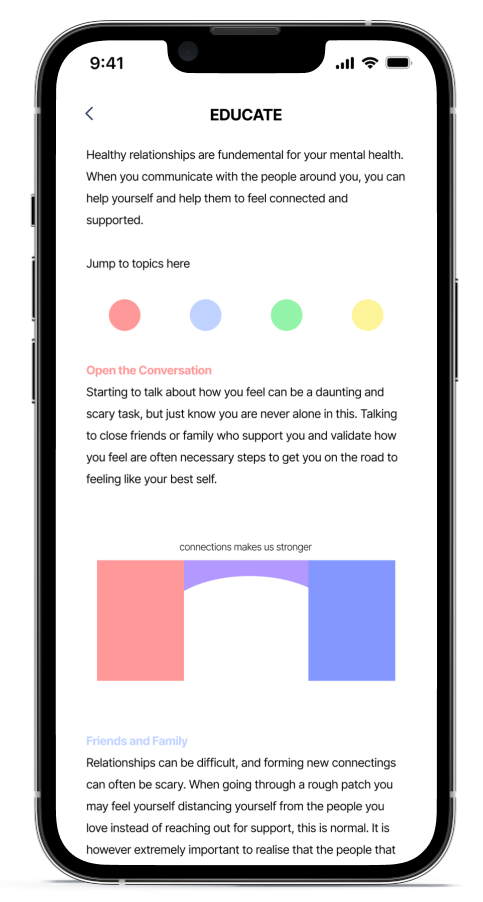
04
Education
Helping users to find out ways to discuss the stressors in their lives in a constructive manner.
With more time I would've...
- Completed further testing and iterations to bring the prototype to hi-fidelity. I would’ve loved to be able to include more features and accessibility options, as well as a sleeker redesign.
- Conducted some longitudinal research so I could really gain a better grasp of the usefulness of the app. I would’ve loved the opportunity to talk in depth with testers about their long-term use cases for the app, and the things that they felt could be improved upon.
I learnt how to...
- Be a UX designer. This was my first ever project and first time using the tools of the trade which meant it was alot of get my head around. I'm proud of what I achieved in the short time-frame, but know there's alot of room for growth!
- Manage expectations and that not everything has to be included. As people change so do the things we make, iterating to help users means changing with them.
For the future...
- Integrate AI into the journaling function. AI holds so much potential, and using it in accompaniment with the templates will help users develop more ways to express and communicate their feelings.
- Find more ways to integrate education into the app. To ensure long-lasting and beneficial change for users, I would like to develop more educational content, in the forms of audio recordings, infographics and games to help users learn more.
